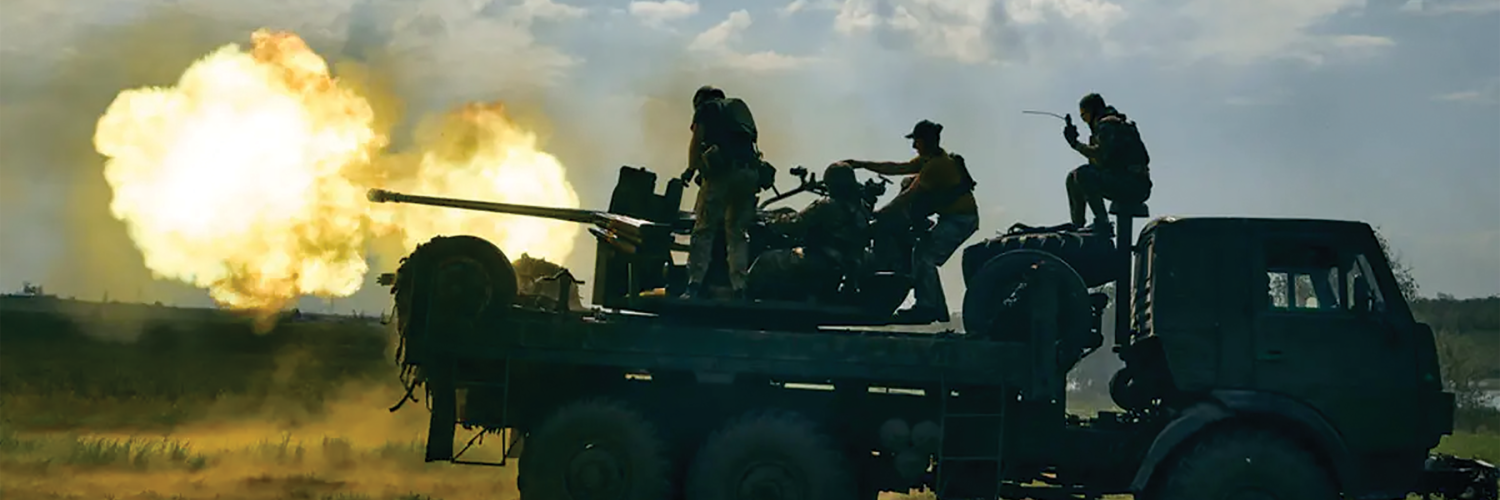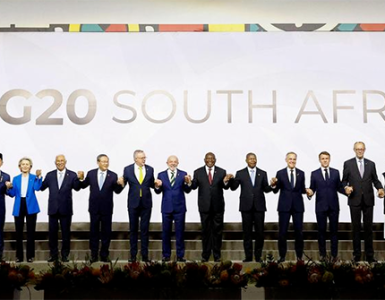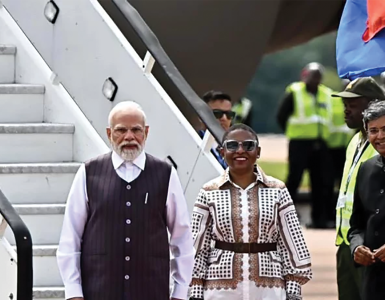FLAWED ASSUMPTIONS: One of the many tragedies of the ongoing Ukrainian-Russian conflict is the fact that much of what Ukraine does on the battlefield is dictated not by military necessity but rather political imperative
By Scott Ritter
As we enter the second week of Ukraine’s long-awaited and highly touted counteroffensive, some basic conclusions can be drawn even though the fighting continues, and will continue to rage, for some time to come.
First and foremost, the counteroffensive gambit has failed. While there is still considerable combat strength left in the Ukrainian military, including more than 75% of the NATO-trained and -equipped 60,000-strong cohort Ukraine had assembled in the past eight months, fundamentally flawed assumptions about the quality of the force on which Ukraine and its NATO allies had placed their collective hopes for victory over Russia have been exposed. In short, Ukraine lacks the military capacity to overcome Russian defenses.
Ukraine’s most elite assault brigades, equipped with the latest Western military technology, failed to advance out of what Russian defensive doctrine calls the “cover” line of defense—the buffer that is designed to channel and disrupt an attacking force prior to reaching the “main” line of defense.
Ukrainian casualties were extremely heavy, with Russia achieving a 10:1 kill ratio in terms of manpower, which is unsustainable from the Ukrainian perspective. The reasons for the Ukrainian failure are fundamental in nature, meaning that they cannot be overcome as things currently stand and, as such, the Ukrainian military has zero chance of success, no matter how hard they press subsequent attacks.
First and foremost is the quality of the Russian defenses, especially in terms of the barrier network (minefields, obstacles, and trenches) which, when combined with the tenacity of the Russian defender and the overwhelming superiority Russia enjoys in terms of fire support (both artillery and air-delivered), is the reason the Ukrainians are unable to advance beyond the “cover” layer of the Russian defenses.
Ukrainian equipment and tactics are insufficient to the task of breaching the Russian obstacle barriers in any meaningful manner, dooming the attacking forces to be destroyed piecemeal by Russian artillery and air strikes, as well as local counterattacks mounted by Russian special forces.
Besides the poor tactics and equipment deficiencies (yes, the Leopard tanks and Bradley fighting vehicles were not the miracle weapons Ukraine and its Western supporters had hyped them up to be), the Ukrainians are paying the price for Russia’s impressive suppression of enemy air defense (SEAD) campaign that has been ongoing for many weeks now.
Russia has not only neutralized Ukraine’s ability to defend strategic targets far beyond the front lines, but also to project any meaningful air defense capability into the actual zone of conflict. This, combined with the lack of any viable air force, leaves the attacking Ukrainian ground forces exposed to the full weight of Russian air power.
One of the many tragedies of the ongoing Ukrainian-Russian conflict is the fact that much of what Ukraine does on the battlefield is dictated not by military necessity, but rather political imperative. The recently concluded months-long Battle for Artemovsk (Bakhmut) is a case in point, where Ukrainian President Zelensky insisted on pouring manpower and equipment into a battle for a town that most military experts believed to hold minimal strategic military value. The geography, however, did not dictate the scope and scale of the battle, but rather the perception of Ukrainian defensive tenacity, and as a result between 60-75.000 Ukrainian soldiers lost their lives in what was a losing effort.
Similarly, the Ukrainian army is being asked to make what amounts to a suicide attack against well-prepared Russian defenses under conditions which, as detailed earlier, can only result in a decisive Ukrainian defeat.
This time, the culprit is Ukraine’s NATO allies who, on the eve of their annual summit, are desperate for any sign that the multi-billion-dollar investment they have collectively made in the Ukrainian military can pay even the most rudimentary dividends. For this reason, NATO will continue to pressure Ukraine to double down on defeat, pressing the Russians offensively even though any gains, if in fact any can be had, would be pyrrhic in nature and unsustainable over the long run.
The reality is that when NATO gathers in Vilnius on July 11, the Russians will be well into the process of destroying the third Ukrainian army built by NATO. The first was assembled during the buffer provided by the diplomatic “sham” of the Minsk Accords, from 2015-2022. Some 260,000 strong, this force was largely destroyed by June of 2022. The second army, consisting of some 80,000 newly trained and equipped Ukrainian soldiers backed by thousands of foreign mercenaries, the direct result of tens of billions of dollars of military aid provided by NATO, was able to launch the successful Ukrainian counterattack in the fall of 2022, before being decimated in the positional war that followed (including the Bakhmut slaughter).
NATO is politically committed to waging a proxy conflict with Russia “to the last Ukrainian.” This tragic reality means that, regardless of the battlefield reality that exists in Ukraine, NATO will continue to push Ukraine to sacrifice its manpower in a fruitless struggle against Russia for the simple fact that NATO is unwilling to willingly lose political face at home and abroad.
In Vilnius, NATO will be confronted with the reality of its impotency as a military alliance when it comes to countering Russia in Ukraine. Any military analyst of any competence will know that, as things currently stand, Ukraine simply cannot prevail over Russia.
NATO illusions of a “frozen conflict” that seem to drive their insane desire to arm Ukraine to infinity and beyond, moreover, are driven by fundamentally flawed assessments regarding Russian economic competence and capacity, Russian military proficiency, and the will of the Russian people to sustain this conflict.
This short-sighted posture will result in the inevitable military collapse of Ukraine, probably sometime between late summer/early fall of this year. When this happens, NATO will be left scrambling to construct some sort of face-saving mechanism to salvage its weakened geopolitical position vis-à-vis Russia.
What that will look like is unknown at this time. But one thing is for certain—because NATO refuses to consider an off-ramp from the Ukrainian conflict today, there will be no future for Ukraine tomorrow. NATO political pride will be the downfall and destruction of the Ukrainian nation, its military, and its people.
Originally published: Internationalist 360° on June 17, 2023
Comment
CAMPAIGN TO EMPOWER BOYS WELCOME
With the youth now being the most vulnerable group in the South African labour market due to the ever soaring unemployment rate, male teenagers have been identified as the most neglected with many unable to complete high school studies.
Efforts to stem the spiralling number of unemployed youths should not only be the government’s responsibility. The private sector must also join hands to help our future leaders. It is therefore heartening that the challenge to help our children has also received serious attention from South Africa’s former Deputy President, Phumzile Mlambo-Ngcuka who has joined forces with the Nelson Mandela Children’s Fund and Primestars in the launch last week of ‘’ What About The Boys Campaign’’.
The objective is to target male youths who had been neglected for years due to a number of reasons that includes neglect, loss of parental guidance, poverty and abuse. Ngcuka a is patron of this campaign. Her own institution, the Mlambo Foundation, would work with the two organizations to help the male teenagers realize their dreams especially after research established that boy-children were always lagging behind the girls. Most boys were unable to finish school while girls were pushed to finish school and even graduated at universities.
The launch of the ‘’ What About The Boys Campaign’’ should therefore be welcomed. Male teenagers are always vulnerable to violence and other criminal activities including robberies and rapes. They are also exposed to drug lords who lure them to these deadly products. These boys end up being serious drug addicts and leaving school before completion of matric. The consequences of these actions are that they start stealing even from their own homes so they can afford to buy the drugs and they end up in jail.
The newly- launched campaign should be embraced by government, business and members of society in an effort to protect our young boys from becoming hobos instead of future leaders of our communities. With the youth unemployment rate having reached almost 45 percent in the first quarter of this year, this is now the time for all responsible members of society to work together to resolve this crisis. Failure to resolve this calamity will spell doom for the country and its future generation.
The dawn of democracy in this country in 1994 was expected to relieve Black people from the shackles of apartheid and for the Black child to at last be able to acquire the best education which they were denied by the apartheid regime. It is unfortunate that some of those who were elected into power failed to seize this opportunity. Instead they resorted to looting State coffers meant to improve the lives of those who suffered so much at the hands of the Nationalist government.
The drive to empower our boys should be supported as it is also a good move to build a responsible nation of good leaders and not morons.






























